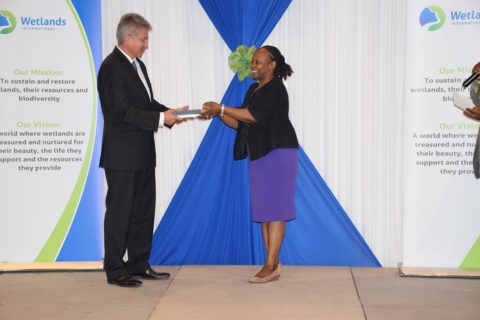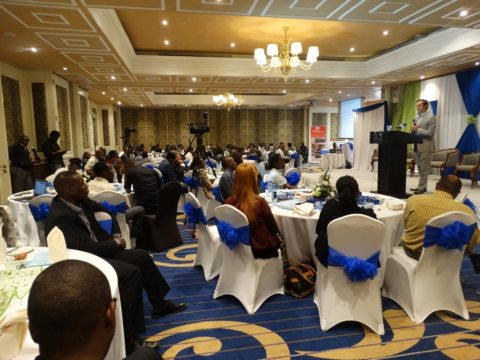On 29th of September 2016 Wetlands International successfully launched one of its latest report a study on The Economics of Ecosystem Services of the Tana River Basin in Nairobi Kenya. This important TEEB Study is vital for the future of the Tana Basin in terms of development planning and water resources allocation and the valuation of ecosystem management in the Tana Basin.

The event brought together more than 100 stakeholders from different Kenyan governmental organisations, research institutes and NGOSs. Key message is that if you want to maximally reap benefits from various interventions in the Tana Basin then you need to carefully plan water allocation by taking into account 3 key elements:
- Nature values should be explicitly factored in water decisions
- water allocation should be based on an inclusive water needs assessment and done in a participatory way
- water allocation uses evidence from basin-wide assessments to avoid welfare losses from unintended consequences and equity issues.
This study looks for example into the role of Tana Delta’s mangroves for local communities. Mr Awahd Hassan, chair of the Kipini Community Conservation Mangrove Forum, shared how mangroves provide services for their livelihoods such as fish, firewood and construction materials. Additionally, they also value mangroves as fish nursery grounds and its role in flood protection. It was found that all these different values represent a total economic value of about 2.5 million USD per year. Not an amount to be simply ignored, while at the same time it is clear that the delta’s mangrove area is continuously reducing.
Mr Geoffrey Wachira of Kenya’s Water Resource Management Authority mentioned that the Water Resources Users Associations ( a mechanism to increase grass-root participation) are still not performing well and need much more capacity development. Wetlands International and IUCN were referring to a new Kenyan reality in water resources allocation. As a result of devolution the Tana Basin has become a trans-county basin. Water planning needs to adapt to this new governance structure with county governments increasingly wanting to be involved to secure water for their ambitions.

The study also includes an integrated assessment of current and future costs and benefits of developments and ”nature use”. It shows that past developments like hydropower generation have brought welfare to the basin with a high benefit costs ratio. Contribution of additional planned interventions to welfare-building will be considerably less. This shows that the Basin’s water resources are getting scarcer and become a limiting factor in enlarging welfare. In such cases trade-offs start to develop with new economic activities seeming to bring benefits when looked upon narrowly but actually creating higher costs elsewhere or in future when looked from a broader perspective.
Speaking at the launch UNEP’s Dr. Joakim Harlin acknowledged the importance of such studies. “Analyses such as these, where the value of environment and ecosystem services are factored in, are essential for understanding opportunities and trade-offs for sustainable management and development of the Tana River Basin. We have 14 years ahead of us to realize the vision 2030 – during these years the implementation of the Tana Catchment Management Strategy will also be undertaken. UNEP looks forward to continuing being a strategic partner in support of and in alignment of both these ambitions.” said Dr. Harlin, Ecosystems Division UNEP.
Prior to the event a documentary on Wetlands International’s experiences in the Tana river Basin was aired on Kenya television and Julie Mulonga, Wetlands International Kenyan program director was interviewed by the same channel on the importance of the study, which is the first of its kind to be done in Kenya.
This launch took place within the framework of the Partners for Resilience, which addresses resilience aspects of large scale development investment.